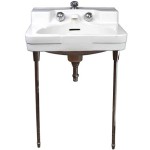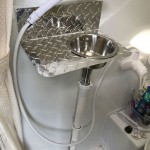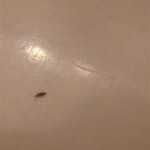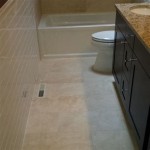How to Fix a Leak Under the Bathroom Sink
A leak under the bathroom sink is a common plumbing problem that can cause water damage, mold growth, and costly repairs if left unchecked. Fortunately, many leaks are relatively easy to fix with the right tools and knowledge. This article will guide you through the process of identifying the source of the leak and providing solutions for common leak types.
Identify the Source of the Leak
The first step in fixing a leak under the bathroom sink is to identify its source. This can be done by carefully inspecting the area around the sink, looking for signs of water damage, such as discoloration, warping, or mold growth. Once you have located the general area of the leak, you can begin to narrow down the specific source.
Common leak sources include:
- Faucet: Worn-out washers, loose fittings, or a broken cartridge can all lead to leaks from the faucet.
- Supply Lines: The pipes that connect the faucet to the water supply can crack, corrode, or develop leaks at the fittings.
- Drain Pipe: Cracks or leaks at the joint between the sink drain and the drain pipe can cause water to seep under the sink.
- P-Trap: The P-trap is the curved pipe located under the sink that prevents sewer gases from entering the house. Leaks can occur at the connections or due to corrosion.
To pinpoint the source of the leak, try turning the water supply off to the sink and observing if the leak stops. If so, then the leak is likely coming from the faucet or supply lines. If the leak persists even after the water is turned off, then the problem may be with the drain pipe or P-trap.
Fixing a Leaky Faucet
If the leak is coming from the faucet, the most common culprit is a worn-out washer or O-ring. To fix this, you will need to disassemble the faucet and replace the worn parts. Here's a general guide:
- Turn off the water supply to the faucet by turning the shut-off valves located beneath the sink.
- Remove the faucet handle and any decorative caps or escutcheons.
- Locate the stem or cartridge that controls the flow of water. This may require removing a retaining screw or nut.
- Remove the worn washer or O-ring and replace it with a new one.
- Reassemble the faucet in reverse order, ensuring the new parts are properly seated.
- Turn the water supply back on and test the faucet for leaks.
If the leak persists after replacing the washer, the stem or cartridge may be damaged and require replacement. In such cases, it is recommended to consult a professional plumber.
Repairing Leaky Supply Lines
Leaking supply lines are another common culprit behind leaks under the sink. If the leak is coming from the connection between the supply line and the faucet, you may be able to tighten the fittings. However, if the leak is coming from a crack or corrosion in the supply line itself, it needs to be replaced. Here's how to replace a leaking supply line:
- Turn off the water supply to the sink by turning the shut-off valves located beneath the sink.
- Disconnect the old supply line from the faucet and the water shutoff valve.
- Cut off the old supply line at the shutoff valve, leaving enough room for the new line.
- Install the new supply line by connecting it to the faucet and the water shutoff valve using appropriate fittings.
- Tighten the fittings securely, but avoid overtightening, which can damage the pipes.
- Turn the water supply back on and check for leaks.
When installing a new supply line, it is recommended to use braided stainless steel lines, as they are more durable and resistant to leaks than rubber or PVC lines.
Fixing Leaking Drain Pipes and P-Traps
Leaks in the drain pipe or P-trap are usually due to corrosion, cracks, or loose connections. If the leak is minor and is only coming from the joint between the sink drain and the drain pipe, you may be able to tighten the connection with a wrench. However, if the leak is significant or the pipe is corroded, it needs to be replaced.
To replace a leaky drain pipe or P-trap, follow these steps:
- Turn off the water supply to the sink by turning the shut-off valves located beneath the sink.
- Disconnect the leaking pipe from the sink drain and the drain pipe.
- Remove the old pipe, taking care not to damage the surrounding piping.
- Install the new pipe, ensuring it is properly aligned and the connections are secure.
- Turn the water supply back on and check for leaks.
It is important to use appropriate plumbing materials and tools when fixing leaks in drain pipes and P-traps. If you are unsure about any part of the procedure, it is best to consult a professional plumber.

How To Fix A Leaking Bathroom Sink Paschal Air Plumbing Electric

Bathroom Sink Drain Leaking Around Threads Premier Plumbing Inc

Common Sink Leaks You Could Probably Fix Yourself

How To Fix Pipework A Tap Faucet Leaking Under The Sink

How To Fix Constant Leak Under Bathroom Bunnings Work Community

Bathroom Sink Drain Leaking Around Threads Premier Plumbing Inc

4 Ways To Fix A Bathroom Sink Leaking Underneath Fast Easy

How To Fix A Leaking Bathroom Sink Paschal Air Plumbing Electric

Hose Under Your Sink Is Leaking Here S What You Have To Do

How To Fix Constant Leak Under Bathroom Bunnings Work Community
Related Posts







